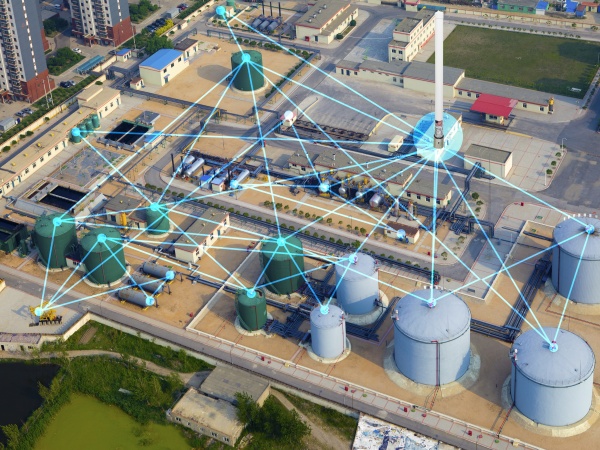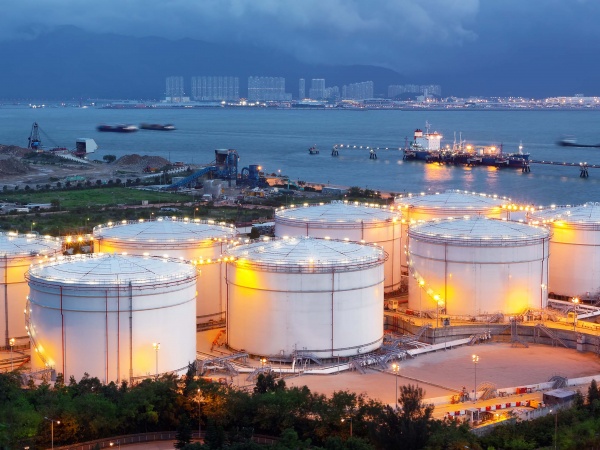Stay Connected to Your Assets with a Wireless Remote Monitoring and Control Solution
As the industry moves to remote instrumentation to monitor different aspects of operations, the Signal Fire Remote Sensing System™ (SFRSS) offers wireless remote management of a variety of assets in challenging, large-scale environments such as oil and gas fields, petrol processing plants, agriculture, water systems and the public infrastructure. Staying connected to what is happening with equipment, environmental conditions, supply/water levels and other operations is an essential – and challenging – task to remain productive in any industry.
By monitoring the status of different performance parameters in real-time, the SFRSS helps refineries, farms, wastewater treatment plants, food processing plants and other industries stay connected with assets and operations in real-time. More than automating data collection, these wireless telemetry systems are configurable to shut down operations or send an alert when reaching a threshold. Collected data is downloadable into analytics software for better asset management and to connect workers by laptop or smart device in diverse and remote locations for greater collaboration.
What is a wireless remote monitoring and control system? Here’s how the SFRSS works:
Reliable, Long-Distance Data Communications
At the heart of the SFRSS is a Gateway and remote transceiver Nodes that power and communicate with sensors that collect data from operations. In a tank level monitoring application, a level sensor would provide intelligent data on the water levels in the tank and a pressure sensor would detect pressure levels in that same container. Nodes wirelessly collect data from a variety of sensors and transmit the intelligent information to Gateways. With Gateways able to accommodate many nodes, a wireless sensor control network can cover a geographic range of hundreds of square miles. Linked to the Internet and back-end servers, Gateways bring data from the Nodes in various formats such as 4-20mA, Modbus, and HART protocols. Data is accessible by PLC in a control center or Internet connection through a laptop or tablet. Users can even move data to the cloud or a backend server for long-term historical analysis (see graphic 1).

Graphic 1: Shown is a representation of the different components and communication interfaces of a SignalFire Remote Sensing System.
Sensor Agnostic: Integrate the Sensors of Your Choice in One Network
With an open architecture mesh network that interfaces with virtually any sensor type, the SFRSS enables asset managers to monitor and access various field data using a mix of different sensor types to control pumps, valves, lighting and other devices in one network. Users can choose the best sensors for an application such as:
- Pressure sensors
- Flow meters
- Valves and motor controllers
- Level sensors
- Temperature sensors
- Switches
- Gas sensors
- Hatch Watchdog Sensors
Cost Advantages
More cost-effective and scalable than wired systems, Signal Fire’s wireless control systems operate in remote locations over difficult terrain, eliminate costly cable and trenching, and are less susceptible to lightning strikes. While nothing can survive a direct hit, a wireless system struck by lightning loses only one asset, versus the loss of the entire network. Operating as a stand-alone battery or solar-powered system, the SFRSS can prove very cost effective and convenient, especially in areas with regular power outages or no power at all.
Wired solutions can be expensive to implement and maintain. Installed costs can run $5 to $20 per foot or more if trenching is required. Installation costs can restrict the use of a wired system.
Wireless systems, along with their attached sensors, can be set up, configured, and tested in the shop before taken to the field for installation. Operators report that field installation times can be reduced by up to 75% using preconfigured wireless sensor networks.
Range of Applications
- Flow measurement
- Tank level monitoring
- Batch processing
- Steam trap monitoring
- Pressure and temperature monitoring
- Valve performance/pump control
- Equipment condition monitoring
- Irrigation system monitoring
- Valve actuation
- Remote well shutdown
- Emissions control
- Tubing and casing pressures
Tank-level monitoring is a typical wireless application used in upstream pumping, oil and gas, wastewater, agriculture, and other industrial applications to eliminate run-outs and overflows while optimizing and ensuring the integrity of operations.
Download the article Justifying the Move to Wireless Tank Monitoring
0 Comments
Leave a reply
You must be logged in to post a comment.







